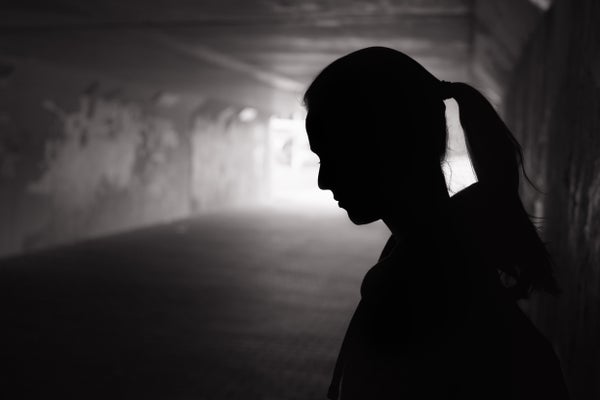This article was published in Scientific American’s former blog network and reflects the views of the author, not necessarily those of Scientific American
As parents and loved ones are preparing to send their children back to school or off to college, perhaps we need to take time to bring a difficult topic out of the darkness and into the light. Akin to the silent killer hypertension, today we have an emerging silent killer characterized by undetected or unrecognizable emotional distress, that when left untreated may lead to life’s most irreversible outcome: death.
While there has been an increase in suicide rates in the United States, the rates among children and teens presents an even more disturbing picture. Suicide among girls has outpaced suicide among boys. Since 2007, the rates for girls age 10–17 rose by nearly 13 percent compared to 7 percent for boys of comparable age. The rates among adolescents and young adults have reached an all-time high. In fact, suicide among those age 15–19 and 20–24 rose 47 percent and 36 percent respectively since 2000. Suicide has become the second leading cause of death for those age 15–24.
As a nurse, I have cared for families who were left to pick up the pieces after experiencing the loss of a loved one due to suicide. Last week I was saddened to learn of another suicide death of a young woman who had sought refuge at a friend’s home just months before taking her own life.
On supporting science journalism
If you're enjoying this article, consider supporting our award-winning journalism by subscribing. By purchasing a subscription you are helping to ensure the future of impactful stories about the discoveries and ideas shaping our world today.
While the loss of any child is distressing, the rise in suicide among children and youth is particularly distributing. The picture is even more grim for black teens. Suicide rates for black female teens rose 182 percent between 2001 and 2017. This compares to the 60 percent increase for black male teens during the same time period. And while more research is needed to better understand this growing trend, we need immediate action now.
There are many factors thought to contribute to this increase. Some researchers believe that cyberbullying through social media may be a trigger for individuals who have either committed suicide or are contemplating such a move. Other contributing factors may include the increased pressures that children, adolescents and young adults face today, a history of adverse childhood experiences, the opioid epidemic, depression and loneliness. While more needs to be known about the role and frequency of these and other factors, it is clear that the issue of suicide transcends geographic localities, communities, cultures, genders and racial and ethnic identities.
The stigma associated with mental health issues continues to hover over many families and communities making it difficult for parents or other concerned individuals to seek counseling or treatment for their children. Some members within black communities still believe that suicide is fundamentally a problem of white communities. The shame associated with having to address such an issue further contributes to the silence that is often prevalent in many communities.
Just as we have promoted the widespread recognition of hypertension as a silent killer, we need to intensify educational campaigns to shed light on preventing suicide. Given this national crisis, parents, teachers, school counselors, medical providers, students and the general public should be educated about this crisis and ways to recognize and intervene when someone needs assistance.
We need to ensure that our nation has a well-prepared supply of behavioral health specialists. By 2025, according to government projections, there will be tremendous shortages of more than 10,000 full-time mental health and substance abuse social workers and school counselors . These and other behavioral specialists are critical to promoting mental health well-being, as well as preventing and treating mental health problems and substance abuse disorders.
The time to move beyond the silence, shame and stigma associated with suicide is long overdue. Our young people have issued a clarion call, and now we must respond.
